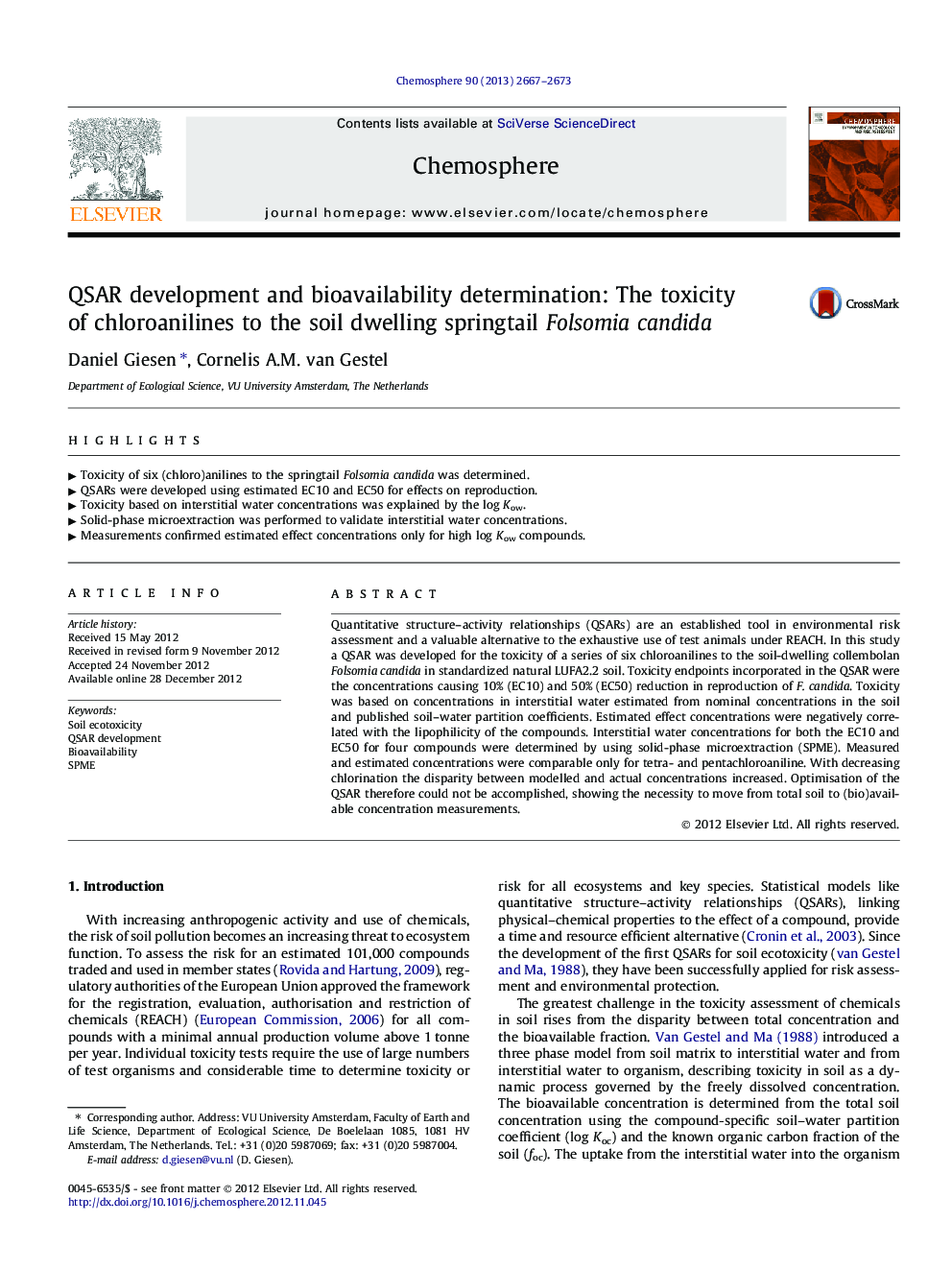| Article ID | Journal | Published Year | Pages | File Type |
|---|---|---|---|---|
| 6310725 | Chemosphere | 2013 | 7 Pages |
Quantitative structure-activity relationships (QSARs) are an established tool in environmental risk assessment and a valuable alternative to the exhaustive use of test animals under REACH. In this study a QSAR was developed for the toxicity of a series of six chloroanilines to the soil-dwelling collembolan Folsomia candida in standardized natural LUFA2.2 soil. Toxicity endpoints incorporated in the QSAR were the concentrations causing 10% (EC10) and 50% (EC50) reduction in reproduction of F. candida. Toxicity was based on concentrations in interstitial water estimated from nominal concentrations in the soil and published soil-water partition coefficients. Estimated effect concentrations were negatively correlated with the lipophilicity of the compounds. Interstitial water concentrations for both the EC10 and EC50 for four compounds were determined by using solid-phase microextraction (SPME). Measured and estimated concentrations were comparable only for tetra- and pentachloroaniline. With decreasing chlorination the disparity between modelled and actual concentrations increased. Optimisation of the QSAR therefore could not be accomplished, showing the necessity to move from total soil to (bio)available concentration measurements.
⺠Toxicity of six (chloro)anilines to the springtail Folsomia candida was determined. ⺠QSARs were developed using estimated EC10 and EC50 for effects on reproduction. ⺠Toxicity based on interstitial water concentrations was explained by the log Kow. ⺠Solid-phase microextraction was performed to validate interstitial water concentrations. ⺠Measurements confirmed estimated effect concentrations only for high log Kow compounds.
